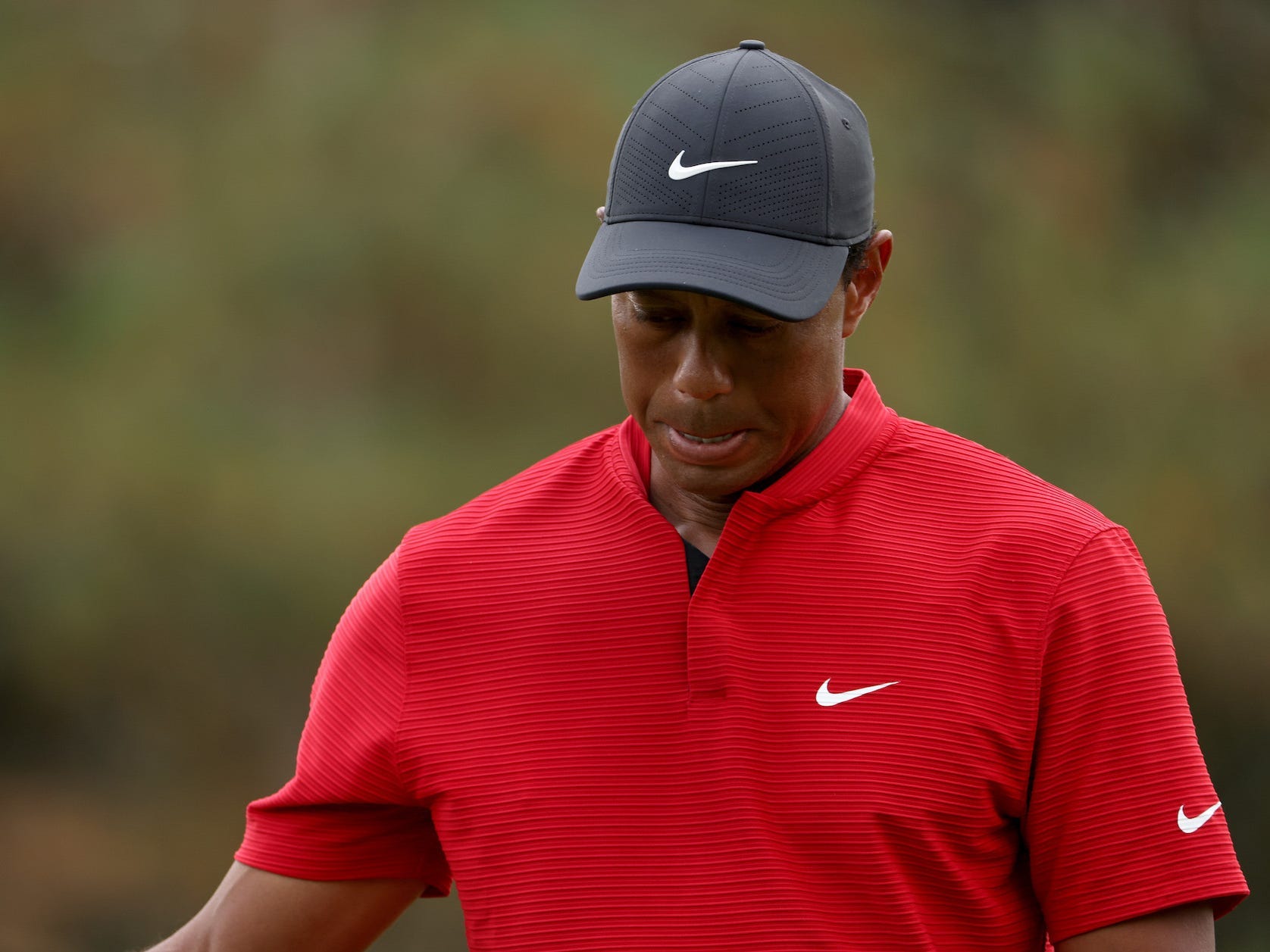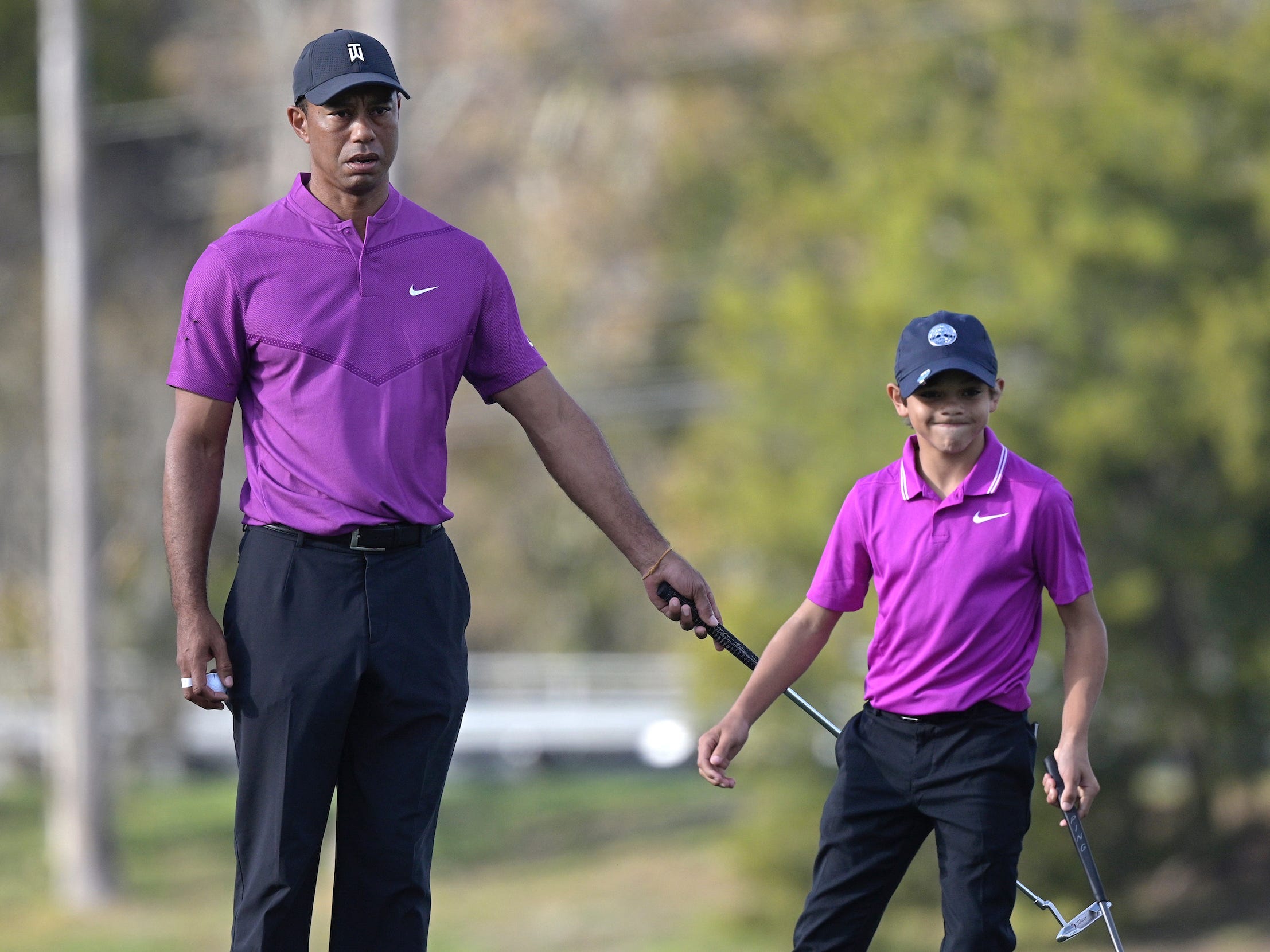
REUTERS/Lucy Nicholson
- Tiger Woods shattered his ankle and suffered multiple leg fractures in a scary car crash on Tuesday.
- Dr. Bill Mallon thinks the golf legend will be able to walk, play golf, and return to the PGA Tour.
- The former pro golfer who is now an orthopedic surgeon believes Woods’ recovery will take about a year.
- Visit Insider’s homepage for more stories.
Tiger Woods may be down but never count Tiger Woods out.
The golf legend was rushed into emergency surgery Tuesday morning after sustaining multiple leg fractures and shattering his ankle in a scary, roll-over car accident in Los Angeles.

AP Photo/Phelan M. Ebenhack
Although Woods’ road to recovery will undoubtedly be arduous, one of the only individuals on the planet with first-hand experience in treating traumatic injuries and playing professional golf thinks the 45-year-old superstar will be able to return to the course and play at an elite level.
“I think Tiger can play golf again,” Dr. Bill Mallon – a former PGA golfer turned orthopedic surgeon – told Insider on Wednesday
“And assuming he plays golf again – meaning he doesn’t get an infection or severe arthritis in that ankle – I think he can return to the Tour,” he added.
Woods’ camp revealed on Twitter Wednesday morning that the golfer had suffered a slew of “significant orthopaedic injuries” to his right leg, including “comminuted open fractures affecting both the upper and lower portions of the tibia and fibula bones… additional injuries to the bones of the foot and ankle” and “trauma to the muscle and soft-tissue of the leg.” So with the extent of the damage coming into scope, Insider asked Mallon to translate Woods’ diagnosis in layman’s terms.

AP Photo/Matt Slocum
Mallon spent four years competing on the PGA Tour and posted three top-10 finishes as a professional before leaving the links to pursue a career in medicine. A practicing orthopedic surgeon for roughly two decades, Mallon has since stepped away from the operating table to become editor of "The Journal of Shoulder and Elbow Surgery," a leading publication in the orthopedics sphere.
"Tiger had an open fracture which means that the bone came through the skin," Mallon said. "Theoretically, that means that's a contaminated fracture now because it's not within the body's tissue envelope. And when that occurs, the risk of infection is higher than on a closed fracture."
"But the risk of infection is low," he added. "I think the risk of infection for an open tibia fracture is down in the range of 1% to 2%. So it doesn't happen very often, but it's the thing we worry most about. And that's the one thing that could really delay any recovery or prevent him from getting a full recovery."

Getty/Jamie Squire
If all goes according to plan, and Woods doesn't face additional complications beyond his initial injuries, Mallon projects it'll take the five-time Masters champion roughly three months to get back on his feet. Getting back into the swing of his golf game, however, requires a different timeline entirely.
Mallon estimates that it'll take "at least a year" to bounce back from a major injury like this one
Woods was already recovering from back surgery - his fifth - when his car collided with a median and tumbled off the road. And even though Woods' more recent injuries are undoubtedly significant, his existing back issues are "the biggest problem for him still long-term - more so than this injury."
"I think he can recover from this injury, but, you know, he's had five back surgeries and, unfortunately, it's hard to recover from a back surgery," Mallon said. "After you've had five, you don't recover as well anymore. And plus, as you get older, you really don't recover as well."

Danielle Parhizkaran-USA TODAY Sports
Still, there are obstacles to overcome relating to Woods' legs. Though fractures heal relatively quickly, he'll need to partake in extensive rehab to rebuild strength in his muscles and surrounding tissues well after his bones themselves have recovered.
Woods' "superb" physical condition for a 45-year-old will undoubtedly work in his favor as he attempts to come back from what is arguably the most devastating injury of his career thus far. But another, perhaps more surprising advantage Woods has is that he broke his right leg, not his left.
When a right-handed player like Woods swings his club, his right leg essentially operates as a pillar of support. However, his left ankle and knee face "a fair amount of torque" as he drives his weight into the ball and whips the club head around at top speed. Plus, right-handers roll onto their left ankles at the tail end of each swing.

AP Photo/Phelan M. Ebenhack
"So your left ankle takes a lot more stress in a golf swing than your right ankle does," Mallon explained. "I'm not saying your right ankle does take some stress, but not nearly as much as the left ankle does. The left ankle absolutely needs more flexibility than the right ankle."
"He's better off having injured his right ankle than his left," he added. "And, yeah, if he'd injured his left, he would have had more trouble getting back the flexibility in the ankle."
Ultimately, Mallon thinks Woods will be able to return to the quality of life he enjoyed before Tuesday's crash. He'll be able to "walk again," fortunately, and "he'll be fine playing with his kids."
Returning to normalcy on the golf course will be a much taller task
In Mallon's experience, patients who experience traumatic injuries like these "almost never get back to normal, to 100%" but "may get to 98, 99%" if they're fortunate. And when it comes to Woods returning to his competitive peak, Mallon is far less optimistic.

REUTERS/Lucy Nicholson
"Will he be the Tiger of old? I think that's impossible," Mallon said. "He's never going to be the Tiger ... [who] was at his absolute best in 2000, 2001. ... He's not returning to 2000, 2001 Tiger. He's not going to be that again. I can assure you of that."
"But, on the other hand, probably no golfer in the history of the game has ever been that."